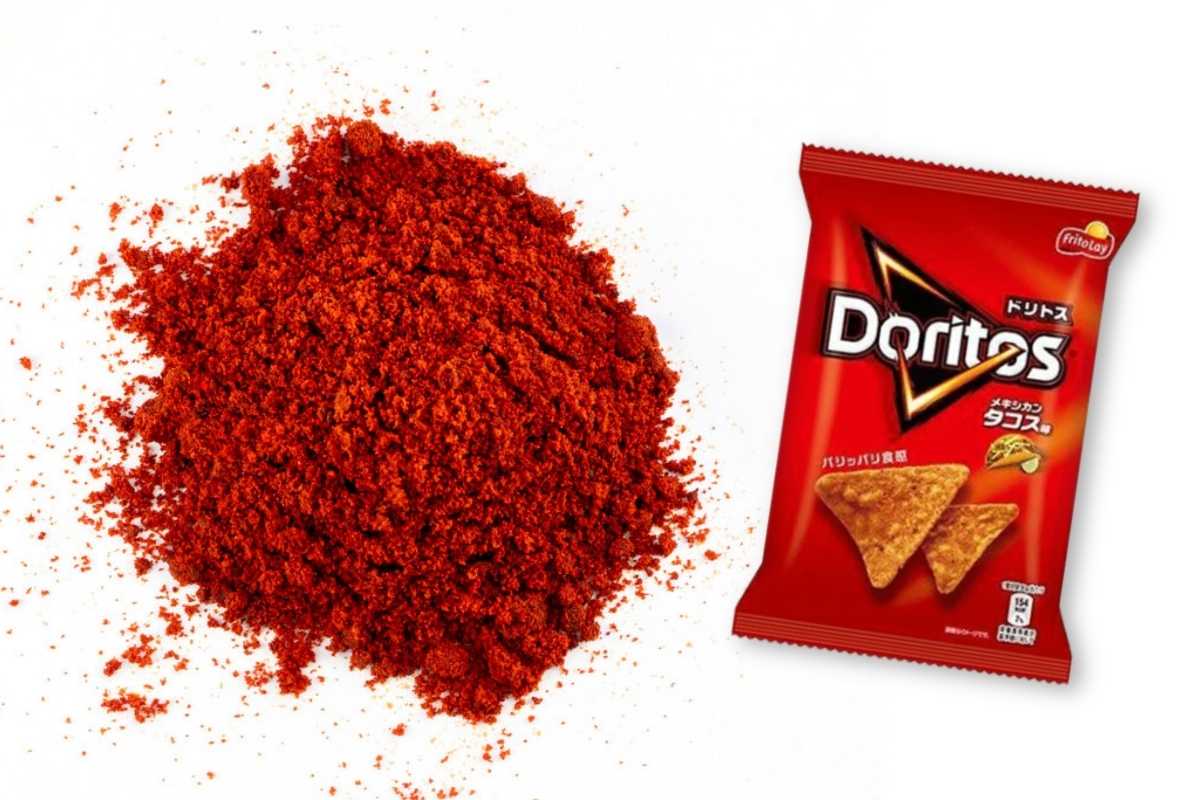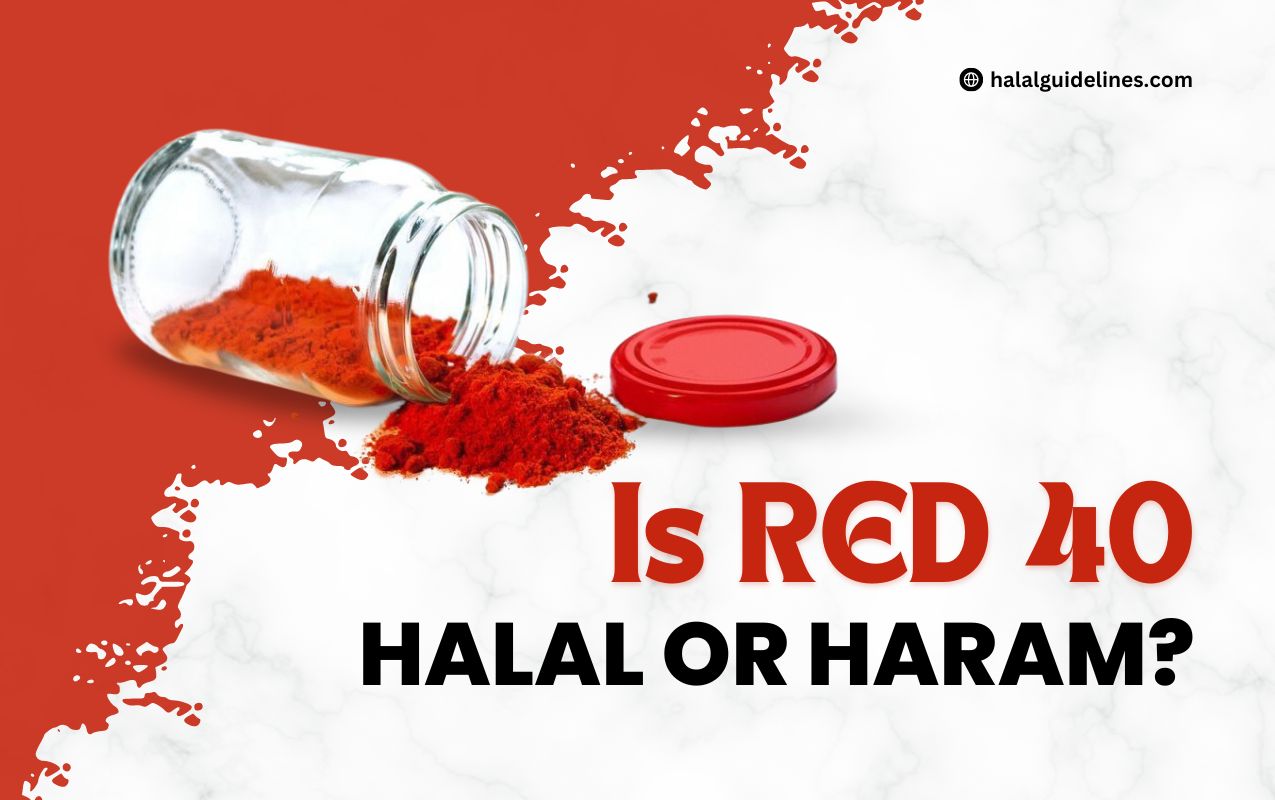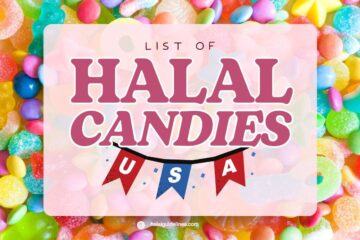As long as food containing Red 40 doesn’t include any other restricted ingredients like pork, alcohol, or other haram products, we can confidently consume it without worrying about breaking any religious rules.
What Is Red 40, and What Ingredients Make It Halal?

Red 40, a widely used red azo dye, serves as a common food coloring agent. The Allied Chemical Corporation developed it in 1971, and it is typically supplied as a red sodium salt that dissolves in water. This synthetic food coloring sees widespread use globally, with annual production exceeding 2.3 million kilograms by 1980.
The U.S. introduced Red 40 to replace Amaranth, and it is a certified color, approved by regulatory authorities like the U.S. Food and Drug Administration (FDA) for use in food products. Manufacturers frequently use Red 40 to replicate the natural red color of fruits and vegetables in processed foods.
Main Ingredients Used in Making Red 40
The key ingredients used to produce Red 40 are below:
- Petroleum
- Sulfonic Acid
- Naphthalene
- Sulfuric Acid
- Sodium Salt
- Chromophores
- Azo Compounds
- Other Acids and Bases
As you can see there are no haram ingredients so that is the reason make it halal-friendly. As long as the final food product does not contain any other prohibited substances.
Products That Commonly Use Red 40 Color

This widely used coloring agent appears in a surprising array of everyday products. For Muslim consumers mindful of halal dietary guidelines, it’s valuable to be aware of where this food additive is commonly found.
Here is a wide range of items that frequently contain this popular red dye:
- Soft drinks and fruit-flavored beverages
- Candies and gummies
- Cereals with colorful pieces
- Flavored yogurts and milk
- Ice cream and popsicles
- Baked goods (cakes, cookies)
- Jams and jellies
- Sauces (ketchup, barbecue sauce)
- Snack foods (chips, crackers)
- Children’s medications
- Cosmetics (lipsticks, blush)
- Toothpaste
- Vitamins and supplements
- Energy drinks
- Fruit-flavored products
It’s a good idea for the Muslim community to check the full list of ingredients in any product. The halal status of a product depends not only on specific ingredients like this red dye but also on the entire content and how the product is made.
More helpful guidelines to read:
- Is Swedish Fish Halal Or Haram To Eat?
- Is Dave’s Hot Chicken Halal or Haram?
- Is Smoking Haram Or Halal?
How to Check if the Products Have Red 40 Food Color

Identifying products containing Red 40 food coloring is an important skill for consumers, especially those with dietary restrictions or health concerns. Being able to spot this common additive on product labels empowers you to make informed choices about the foods and beverages you consume.
When examining product labels, look for these names that indicate the presence of Red 40:
- Red 40
- Red 40 Lake
- FD&C Red No. 40
- Allura Red AC
- E129
- CI Food Red 17
- INS No. 129
Effective Ways to Check for Red 40 in Products
The following are the steps to check Red 40 food color above:
- Read the ingredient list carefully
- Look for the terms listed above
- Check the “Contains” or “May Contain” statements
- Keep in mind that “artificial colors” or “color added” might contain Red 40.
- Use smartphone apps designed to scan and identify food additives
We added a screenshot below to help you identify if the product has Red 40 food color in it:

We have highlighted the Red 40 food coloring with arrows to help you identify it. However, you still need to check the main products to ensure they do not contain any haram ingredients that go against our religion.
Famous Food Items That Commonly Contain Red 40
While many products list Red 40 in the ingredients, some well-known branded items are especially recognized for using this food dye.
Here are some popular food items you may find in stores that often contain Red 40:
- Skittles – Brightly colored, chewy candies
- M&M’s (Red) – Especially red-colored ones
- Doritos (Spicy Variants) – Some bold flavors use Red 40
- Kool-Aid – Fruit punch and other red flavors
- Fruit Roll-Ups – Red and berry flavors
- Jello (Cherry & Strawberry Flavors) – Gelatin desserts
- Cheetos Flamin’ Hot – Bold spicy color
- Froot Loops & Trix – Multi-colored cereals
- Mountain Dew Code Red – Red-flavored energy drinks
- Gatorade (Fruit Punch Flavor) – Sports drinks
- Pop-Tarts (Strawberry/Frosted Flavors) – Icing and filling
- Starburst (Cherry Flavor) – Candy
- Twizzlers (Strawberry Flavor) – Chewy red licorice
Always check the label, as ingredients can change over time. For those concerned about halal and tayyib (wholesome) consumption, consider natural alternatives when available.
Does This Food Color Have Any Drawbacks?
Although many food safety authorities widely use and approve this red food coloring, some concerns have been raised about its potential disadvantages.
From an Islamic perspective, it’s important to consider both its halal status and its overall effects on health:
- Allergic Reactions: Some people may experience allergic reactions to this dye. Symptoms can include hives, itching, or in rare cases, difficulty breathing.
- Hyperactivity in Children: Several studies have suggested a possible link between this food coloring and increased hyperactivity or attention problems in some children.
- Sensitivity Issues: Some individuals might be sensitive to this dye, experiencing symptoms like headaches or digestive discomfort after consuming products containing it.
- Skin Irritation: In some cases, this coloring agent might cause skin irritation when used in cosmetics or personal care products.
It’s important to note that while these concerns exist, regulatory bodies like the FDA consider this food coloring safe when used as directed. But, Islamic dietary laws also highlight consuming what is wholesome and beneficial (tayyib).
If you or your children experience any unusual symptoms after consuming products with this dye, it’s best to consult with a healthcare professional. For Muslims worried about potential risks, especially for children, opting for foods and beverages without artificial colors might be a precautionary approach, aligning with the Islamic principles of avoiding harm and choosing what is best for our health.
What Islam Says About Eating Foods with Red 40
As we know, this food color is halal, which means we Muslims can eat it. But in Islam, it’s not just about what’s allowed or not allowed. We should also think about in case something is good for us. Islam teaches us to eat food that is both halal and tayyib. “Tayyib means wholesome and healthy.”
Our religion also tells us to avoid things that might harm us. If you’re not sure about Red 40, it’s okay to choose foods without it. This follows the Islamic idea of being careful with our health. Remember, Islam encourages balance in everything we do. This includes what we eat. If you decide to eat foods with Red 40, try not to have too much.
For Muslim parents, it’s good to think carefully about giving children foods with Red 40. If you’re worried, you can choose natural food colors instead. In the end, it’s up to each Muslim to decide. Think about what’s halal, what’s healthy, and what feels right for you and your family.







